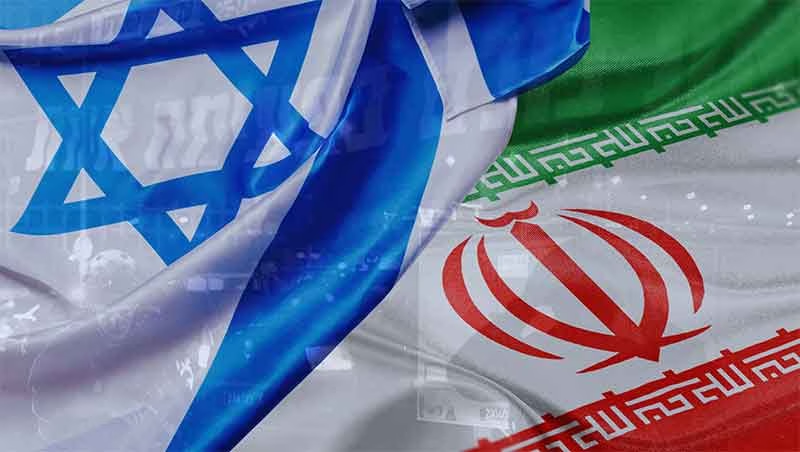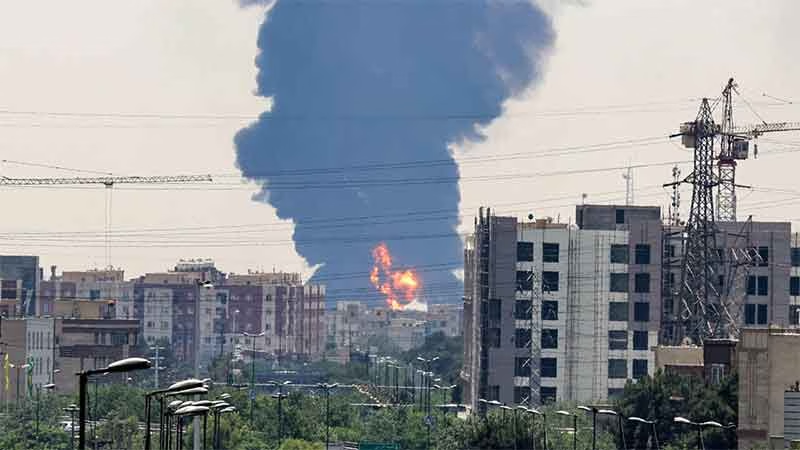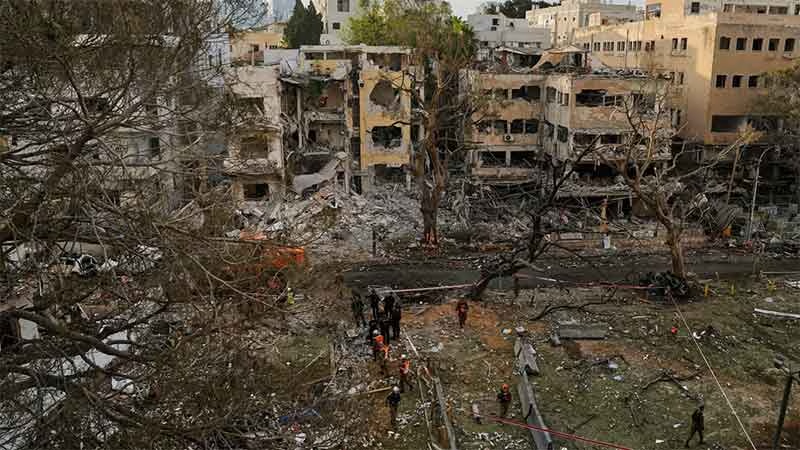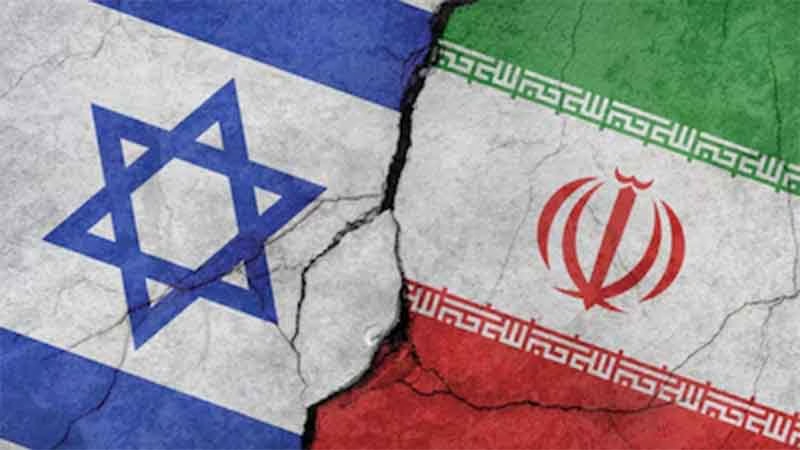
This article was written 10 years ago. Nothing has changed!
It appears President Trump is fond of time travel. In his July 4th speech he talked about taking over airports in America in 1775. There was no air travel in 1775. Facts don’t matter. Except this time, travelling back in time in our Iran dealings has very dangerous and unforeseen consequences.
More than a year has passed since Washington and European allies failed to uphold their commitment to the Joint Comprehensive Plan of Action (JCPOA) or the Iran Nuclear Deal. Trump categorically pulled out of the Deal while the Europeans continue to insult Iran by insisting that it abide by a Deal that no longer exits, and tolerate sanctions. They add insult to their injury by offering the all too tolerant Iranian nation a “food for oil” program, or INSTEX in a fancier terminolog.
Moreover, Western media, the mouthpiece of neoconservatives in Washington is asking: “Why does Iran need enriched uranium?”, or “Why do they need enriched uranium if not for a bomb?”. The answer is in this article first published 10 years ago when the Lobby was pushing for war as it is today. Plus ça change!
The Lobby versus Science
Tragic as war is, it has often led to scientific and medical discoveries. Today in Washington, the Lobby is using science as a pretext for war — scientific and medical discoveries that may help not only developing nations, but advance healthcare in America and elsewhere.
Article 25 of the Universal Declaration of Human Rights clearly includes the right to medical care — yet it appears that the pro-Israel lobbyists in Washington have persuaded policy makers that the developing world is excluded from this right, and Iran’s significant scientific achievements are a global threat designed to do ill and not the means to heal. Dissemination of such misinformation is akin to the very cancer that the Iranian scientists have been attempting to cure and stem out.
In 1972, a joint research project (French-Iranian scholars) on esophageal cancer in the Caspian Littoral of Iran was released. The findings indicated that the region had among the highest recorded incidences of esophageal cancer in the world. The utility of the research was that given its location, it was not unique to Iran and represented the Middle East, China, Afghanistan, and former Soviet central Asia, parts of Siberia, Mongolia, and northern and western China [i].
Perhaps it is with this in mind that almost four decades later and with “health diplomacy” in mind, Iran and the United States, with foresight and fortitude by the National Institute of Health’s mission of Science for Health launched on three areas of cooperation: 1) Esophageal Cancer; 2) Mustard Gas Exposure and Lung Carcinogenesis; 3) HIV and drug use.[ii] It is not without irony that Iran’s research and expertise in mustard gas should be the result of America’s policies during the 8-year Iran-Iraq war when the U.S. decided to arm Saddam Hossein with CBTW (chemical, biological, toxin warfare)[iii] .
Today, in order to wage another war against Iranians and to ensure that Iran shares Iraq’s fate, the argument presented by the Lobby and trumpeted by the neoconservative-dominated media is why does Iran not need to enrich uranium. Before one responds that it is Iran’s right under the NPT, it would be more simple to demand of the neoconservatives to explain why America and her allies should place such a high demand on radioisotopes?
In 1959, Science reported that radioisotopes have always been a source for “scientific research, and their application to such activities as agriculture, industry, and medicine is now steadily increasing”[iv] Today, there is a dire shortage . On July 26, 2009, The Houston Chronicle reported that a drug crucial to medical tests was in short supply. This was due to the loss of the 51-year-old reactor in Ontario, Canada that produces much of this drug, a radioisotope. In the same issue, Dr. Einstein mentions the numerous uses of radioisotopes.
In “Blood Weekly”, (July 2, 2009, p603), Cotara R, a radioisotope being developed as a potential new treatment for glioblastoma multiforme (GBM), a deadly form of brain cancer. In October, Iran announced it had produced two new radio medicines called “Samarion 153” and “Renium 186” which were able to reduce pains of cancer patients. Furthermore, these medicines could be used for defining of cancer and reducing bone disease. Iran also informed that the results of a new anti-cancer medicine would be publicly announced in 2010[v].
However, the Iranian-derived radio medicine differs vastly from the Canadian product.
The U.S. supplies weapon-grade uranium (HEU, 90-percent 235U) to the Canadian radioisotope producers while Iran uses low enriched uranium (LEU, containing less than 20 percent 235U) for its isotopes. Given the danger of HEU (HEU is capable of making a bomb), the 1992 Schumer Amendment to the U.S. Atomic Energy Act requires that a foreign producer cooperate with the United States in converting to LEU. These have resisted. MDS-Nordion of Canada as an example, continues to import bomb-grade uranium thanks to a 2005 lobbying campaign which resulted in the Burr Amendment in the National Energy Policy Act of 2005[vi].
The Department of Energy’s findings indicate not only a coming shortage in medical isotopes, but a promise of new treatments such as ‘ isotopes for cancer therapy and pain control’[vii] . Given the feat of overcoming HEU to LEU conversion — and overcoming the lobby’s influence, Iran’s extraordinary achievement is to be commended, not blasted – literally. Even in isolation Iran’s remarkable strides in medicine can serve as a bridge, not as a crevice. Medicine is not the only common threat between the two nations. Science and engineering has always bonded the two nations (2007[viii]). Seismic Science has its unique and special place in research.
It is incomprehensible that even though Washington has full knowledge that Iran’s pursuit of nuclear program is for civilian purposes, and the two countries have cooperated in medical research, the lobby had demanded that Iran be hauled to the UNSC, and it is now calling for further sanctions to be imposed on Iran. Is there any doubt that they are pushing for an eventual war? It is tragic that a benign program that has the potential to cure and alleviate human suffering should be the lobby’s weapon for destruction – at home and abroad. Perhaps the real tragedy is the realization that Americans are sovereign no more.
Soraya Sepahpour-Ulrich is an independent researcher and writer with a focus on US foreign policy.
[i] Science, New Series, Vol. 175, No. 4024 (Feb. 25, 1972), pp. 846-853
[ii] http://acd.od.nih.gov/slides/120106/GlassACD120106.pdf
[iii] http://www.cbsnews.com/stories/2002/12/31/world/main534798.shtml
[iv] Science, New Series, Vol. 130, No. 3384 (Nov. 6, 1959), p. 1247
[v] Mehr news agency, Tehran, October 16, 2009
[vi] Frank N. von Hippel and Laura H. Kahn, Science and Global Security, 14:151–162, 2006
[vii] http://www.ne.doe.gov/neac/neacPDFs/isotopedemand.pdf
[viii] http://www.eetimes.com/showArticle.jhtml?articleID=202804309













































